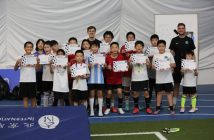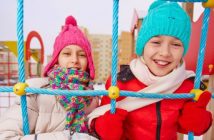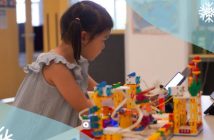Colorful faces, dazzling costumes and kung fu acrobatics
Peking opera first surfaced in 1790 during the Qing dynasty, when the four largest opera troupes from Anhui province entered the capital. When the famous Hubei troupes began arriving in the north during the 18th century, they would often perform with these Anhui ensembles as well, and after 50 or 60 years they gradually combined to form the styles of what are now Peking Opera’s main melodies. Even if you are not a big fan of opera, you will be entertained by the visual spectacle of Peking opera!
The Four Character Types
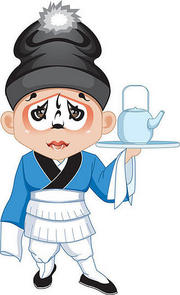 Over many centuries, Chinese opera has developed four principal roles: shēng (生, the male roles), dàn (旦, the female roles), jìng (净, the painted face roles) and chǒu (丑, the clowns/comedy roles). Actors generally train to play a single type of role for their entire career. Each category is also subdivided into further distinctive types.
Over many centuries, Chinese opera has developed four principal roles: shēng (生, the male roles), dàn (旦, the female roles), jìng (净, the painted face roles) and chǒu (丑, the clowns/comedy roles). Actors generally train to play a single type of role for their entire career. Each category is also subdivided into further distinctive types.
Shēng (生) includes four types of male roles. Lǎoshēng (老生) are middle-aged or old men who are both dignified and serious; they can be high-level scholars, officials or even emperors, and are set apart by their formal attire and long beard (black or grey, depending on age). Hóngshēng (红生) have red faces and are roles normally designated for young, male characters. Xiǎoshēng (小生) are young men who sing in warbled voices to indicate they are still adolescents, and wǔshēng (武生) is usually the male warrior character.
Dàn (旦) is the general term for female roles. Chinese opera has many strong female roles, though for most of its history women were not allowed to perform on stage – much like the tradition of theater in the West, male stars played the female roles. Dan roles are similar to the Sheng roles. Lǎodàn (老旦) indicates an old woman, usually with subdued costumes, no makeup, and a more natural singing tone. The wǔdàn (武旦) is the female equivalent of wǔshēng (武生) and signifies a female warrior. Qīngyī (青衣) are noblewomen – faithful, dignified, sometimes shy and almost always graceful – while huādàn (花旦) are feisty young women with colorful costumes and animated characteristics.
Jìng (净), the painted face role, is the most recognizable role in Peking Opera. This part is reserved for high-ranking generals, bandits, warriors or officials. All Jing characters have elaborately painted faces, with different colors indicating their individual personality and temperament.
A male clown figure, chǒu (丑), usually has distinctive white patches around his mouth and eyes; female clowns have a reddened face with black eyebrows. The Chou roles do not traditionally focus on singing, but rather on clear and fluent dialogue.
The Face Paints
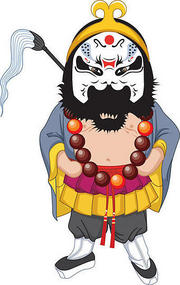 Facial painting (脸谱, liǎnpǔ) has always played a significant part of Peking Opera. Different colors stand for different characteristics: red for loyalty and courage, black for bravery and integrity, white for cunning and craftiness, purple for power, green and yellow for fearlessness, and gold and silver symbolizing supernatural beings and ghosts.
Facial painting (脸谱, liǎnpǔ) has always played a significant part of Peking Opera. Different colors stand for different characteristics: red for loyalty and courage, black for bravery and integrity, white for cunning and craftiness, purple for power, green and yellow for fearlessness, and gold and silver symbolizing supernatural beings and ghosts.
Acrobatics
The most exciting part of Peking opera is the dazzling kung fu performances; actors train for a long time to perfect these skills. The basic stances are “waist and leg” (腰腿功, yāotuǐ gōng), which requires performers to execute difficult and complex jumps; “blanket” (毯子功, tǎnzi gōng), which involves a lot of flipping, rolling and tumbling; and ”combat” (把子功, bázi gōng), in which a character uses weapons and fights realistically.
The Costumes
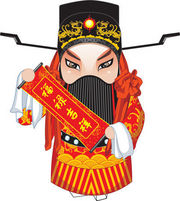 Peking opera costumes are governed by strict rules, with each character’s clothes, hats and weapons designating very specific characteristics. This helps the audience to immediately understand a character’s status and personality. For instance, a crown indicates royalty; its wearer may very well be playing the character of an emperor. Helmets are reserved for military personnel, while straw hats and scarves are worn by commoners.
Peking opera costumes are governed by strict rules, with each character’s clothes, hats and weapons designating very specific characteristics. This helps the audience to immediately understand a character’s status and personality. For instance, a crown indicates royalty; its wearer may very well be playing the character of an emperor. Helmets are reserved for military personnel, while straw hats and scarves are worn by commoners.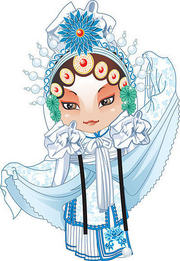
When observing Peking opera costumes, special attention should be paid to the sleeves. Called “water sleeves” (水袖, shuǐxìu), they are used to highlight an action, for instance being shaken when angry or used to draw attention to the elegance of a dance. Fans are also a very important prop, used by performers to emphasize postures and movements that express various emotions and thoughts. These props are also used during scenes with kung fu acrobatics.

